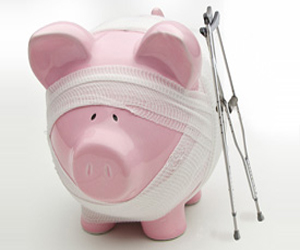Send this article to a friend:
May
24
2023
Send this article to a friend: May |
Are You Ready For a Real Recession?
We haven’t had a real recession in forty years (1981-82) and so only those who were in the workforce back then have any experience of how far and how fast things we think are solid can unravel. What’s a real recession? In the most basic terms, a real recession is an organic, i.e. unmanipulated by central banks, completion of the credit cycle, also known as the business cycle. The credit / business cycle is intuitively easy to understand. When the cost of borrowing money (a.k.a. the cost of capital) declines and credit standards loosen so more enterprises and households can qualify for loans, the incentives to borrow and spend / expand increase. Lenders start making more money because they’re lending more, and borrowers expand their enterprise, buy assets such as bigger homes and retailers sell more goods and services to borrowers who can now access new sources of credit–home equity lines of credit, higher credit card limits, etc. All of this credit expansion is self-reinforcing. Free-spending consumers boost sales and profits, lenders are expanding as borrowing soars, enterprises expand to meet new demand, and so on. Then diminishing returns set in. To maintain the gushing river of profits from expanding credit, lenders loosen standards to the point that marginal enterprises, speculations and households all have access to low-cost credit. Since asset prices skyrocketed as credit pushed demand higher, new investments are increasingly at risk of becoming unprofitable. Those who overborrowed are increasingly at risk of defaulting should their income slip even slightly. Eventually, those who were poor credit risks to start with overborrow and invest in marginal speculations that collapse. These marginal borrowers default, and eventually lenders are forced by the losses to tighten lending standards. This reduces the number of people who qualify for additional credit, and the credit river dwindles to a rivulet. The wealthy who can still borrow have no desire to add more debt, and those desperate to borrow more no longer qualify to add more debt. (If you’re old enough, you might have heard the expression “Prove you don’t need the money and then the bank will lend it to you.”) The self-reinforcing expansive cycle turns to self-reinforcing contraction. Lending, consumption, investment and speculation all drop, reinforcing the contraction, a.k.a. recession. The organic credit cycle is self-clearing: the analogy of the forest fire is apt. All the dead wood of marginal loans and speculations are consumed–that is, marginal debtors default and unpayable debt is written down as losses–and this destruction of bad debt is necessary to clear the financial system and economy for the next growth cycle. The Federal Reserve has unleashed floods of “free money” every time the credit cycle started its cleansing phase for the past three decades, effectively eliminating the essential writedowns of bad debt and the tightening of credit that set the stage for organic growth, i.e. growth that isn’t the result of stimulus extremes such as Zero Interest rate Policy (ZIRP). Now four dynamics will usher in the long-suppressed real recession conflagration:
As I noted last week, our collective response is now limited to either 1. complacency / denial or 2. panic. We're still anchored in complacency / denial, but the phase shift to panic is just around the next corner.
At readers' request, I've prepared a biography. I am not confident this is the right length or has the desired information; the whole project veers uncomfortably close to PR. On the other hand, who wants to read a boring bio? I am reminded of the "Peanuts" comic character Lucy, who once issued this terse biographical summary: "A man was born, he lived, he died." All undoubtedly true, but somewhat lacking in narrative.
|
Send this article to a friend:
 |
 |
 |